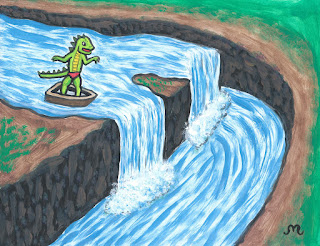When Lightning Strikes, Does It Electrocute The Entire Ocean?
Lightning is one of the most dangerous weapons in Mother
Nature's arsenal. Lightning packs millions of volts of electrical energy and
can reach temperature that is hotter than the sun. When lightning strikes the
ground, it can cause fires, damage property and even kill people. What happens
when lightning strikes the ocean? Does it kill every fish? How far does the
electricity travel? How deep does it go?
Surprisingly, lightning does not cause widespread damage in
the ocean.
Electricity from the lightning travels along the path of
least resistance. In an ocean, the water surface offers the least resistance and
electrons spread horizontally on the surface than penetrating it vertically.
Therefore, fish and underwater plants that live in shallow waters are more likely
to be electrocuted than those that live in deeper waters.
Unlike a lightning strike on the ground, which propels
electrons in streams along a certain direction, lightning strike on the water
causes them to be radiated equally in all directions. This causes the electrons
to lose energy quicker than on the ground. The total affected area in water may
be more, but the distance at which the charge remains dangerous is
significantly smaller.
Even though there are no accurate estimates available, it is
estimated that the “kill zone” for fish is few hundred feet (in a radius) from
the point where the lighting strikes.
Reference:



Wow.. amazing. Frankly I did not know it. great job..
ReplyDelete